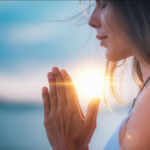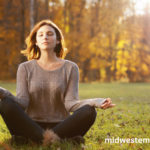Minimalism is an increasingly popular lifestyle for people who want to live a simpler, more meaningful life. It involves reducing your possessions and living life with less stuff. This blog post will explore what minimalism is, how to assess your current possessions, strategies for streamlining your stuff, the benefits of a minimalist lifestyle, and how to develop a plan for living a meaningful life.
Understanding Minimalism
Minimalism is about living with less stuff and focusing on what really matters. It’s about getting rid of the excess, the distractions, and the noise in your life. It’s about creating a life with intentionality, purpose, and meaningfulness. It’s about living with less and doing more.
Assessing Your Current Possessions
The first step in minimalism is to assess your current possessions. Take an inventory of your home and ask yourself which items you need and which ones are just taking up space. This is a great time to get rid of anything you don’t need or use. Donate, sell, or give away items so that they can be used by someone else.
Establishing Goals for Minimizing Your Stuff
Once you have assessed your possessions, it’s time to set goals for minimizing your stuff. Maybe you want to reduce your wardrobe by half, or maybe you want to get rid of all of your excess kitchen gadgets. Whatever your goals are, make sure that they are realistic and achievable.
Strategies for Streamlining Your Possessions
There are many strategies for streamlining your possessions. Try out a “one-in, one-out” policy, where you only allow yourself to bring in one item for every item you get rid of. You could also try the “30-day rule,” where you wait 30 days before buying something new. This gives you time to really think about whether or not you need the item.
Benefits of a Minimalist Lifestyle
Living a minimalist lifestyle has a lot of benefits. It can help you save money, reduce clutter, and create a more relaxed and peaceful home. It also allows you to focus on what truly matters in life, such as relationships, experiences, and personal growth.
Overcoming Objections to Minimalism
When it comes to minimalism, there are often objections and challenges that arise. The most common objection is that minimalism is too extreme and people worry that they won’t be able to enjoy life without all of their possessions. However, minimalism is not about deprivation. It’s about living with intention and purpose.
Developing a Plan for Living a Meaningful Life
Once you have addressed any objections to minimalism, it’s time to develop a plan for living a meaningful life. Think about what matters to you and make sure you are investing your time and energy into those things. Make time for the important relationships in your life and focus on experiences rather than material possessions.
Conclusion
Minimalism is an increasingly popular lifestyle for people who want to live a simpler, more meaningful life. It involves reducing your possessions and living life with less stuff. By assessing your current possessions, establishing goals for minimizing your stuff, using streamlining strategies, and developing a plan for living a meaningful life, you can achieve the benefits of a minimalist lifestyle.






